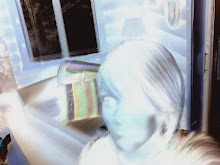
Here is the link to my support article: http://www.getty.edu/art/gettyguide/artObjectDetails?artobj=64649
First, notice the crispness of the bones and the man beside them. Upon initial viewing, the man facing the camera directly is the central focus. However, it is clear that he shares the photo with the men so unable to move beside him. Through this, it seems that the photographer emphasizes that the dead should be honored, but by equalizing the focus on the living and dead, a deep sorrow is revealed. The men who are alive should be what drive the viewer; they should be the concern. The barren expression of the man in the foreground and the lack of character contact with any of the other men creates a kind of upstaging. Eye contact between the man and viewer is nonexistent, and surprisingly, the eyes of the dead are clearer despite the empty sockets. Through this there is a distinct and purposeful contrast between the men and the bones. This juxtaposition reflects the way people treat the dead with greater reverence in comparison to their living counterparts even in modern society, but there is a historical context surrounding this treatment. Despite the contextual evidence provided in numerous accounts that many fallen soldiers of the Civil War did not receive proper burials, it is arguable that they were given greater priority than the men attending to their remains. The photographer demands a yearning from the viewer to understand the plight of these men, but not even he can overcome. The value of the skulls is as harsh and empty as the battlefield; therefore the land is also dead and the men are left, displaced and unwelcome in the civil world.

No comments:
Post a Comment